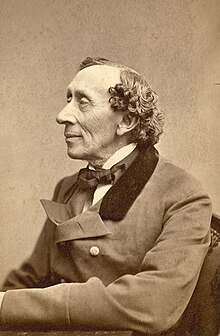
| Part of a series on the |
| Culture of Denmark |
|---|
Danish literature (Danish: Dansk litteratur) stretches back to the Middle Ages. The earliest preserved texts from Denmark are runic inscriptions on memorial stones and other objects, some of which contain short poems in alliterative verse. In the late 12th century Saxo Grammaticus wrote Gesta Danorum. During the 16th century, the Lutheran Reformation came to Denmark. During this era, Christiern Pedersen translated the New Testament into Danish and Thomas Kingo composed hymns. Fine poetry was created in the early 17th century by Anders Arrebo (1587–1637). The challenges faced during Denmark's absolute monarchy in 1660 are chronicled in Jammersminde (Remembered Woes) by Leonora Christina of the Blue Tower. Ludvig Holberg (1684–1754), influenced by the ideas of the Enlightenment and Humanism, is considered the founder of modern Danish and Norwegian literature. Neoclassical poetry, drama, and the essay flourished during the 18th century influenced by French and English trends. German influence is seen in the verse of the leading poets of the late 18th century such as Johannes Ewald and Jens Baggesen. Other 18th century writers include the hymn writer Hans Adolph Brorson and the satirical poet Johan Herman Wessel.
During Denmark's Golden Age (1800–1850), literature centred on Romantic thinking, with authors such as philosopher Henrik Steffens (1773–1845) and the poet Bernhard Severin Ingemann (1789–1862). One of the most important figures in Danish literary culture was Nikolaj Grundtvig (1783–1872). Hans Christian Andersen (1805–1875) is remembered first and foremost for his fairy tales, written between 1835 and 1872. Søren Kierkegaard (1813–1855) was an existentialist philosopher and a theologian. Jens Peter Jacobsen (1847–1885) began the naturalist movement in Denmark with his romantic, melancholic poems. The Modern Breakthrough was a Scandinavian movement influenced by naturalism towards the end of the 19th century (1870–1890), led by Georg Brandes (1842–1927). Other writers include Holger Drachmann (1846–1908), Herman Bang (1857–1912), and Sophus Schandorph (1836–1901).
Henrik Pontoppidan (1857–1943) became a Nobel prize winner in 1917 for his "authentic descriptions of present-day life in Denmark". The 20th century began with reactions against the naturalist movement, moving instead towards nationalism. A national conservative trend was embodied in the works of Kaj Munk (1898–1944) and Valdemar Rørdam (1872–1946). Modern realism was practiced by Bang and J.P. Jacobsen. Social realism was practiced by Hans Kirk (1898–1962) and Martin Andersen Nexø (1869–1954). Jeppe Aakjær (1866–1930), Johannes Jørgensen (1866–1956) and Nobel prize-winner Johannes V. Jensen (1873–1950) brought a new dimension to Danish literature. Karen Blixen (1885–1962), who also used the pen name "Isak Dinesen" is notable for her memoir Out of Africa (1937).
Important post-WW II authors include Tove Ditlevsen (1917–1976), Klaus Rifbjerg (1931–2015), Dan Turèll (1946–1993), Leif Davidsen (born 1950), Bjarne Reuter (born 1950), Peter Høeg (born 1957), Jens Christian Grøndahl (born 1959), Benny Andersen (1929–2018), Anders Bodelsen (1937–2021), Elsebeth Egholm (born 1960), Christian Kampmann (1939–1988), Dea Trier Mørch (1941–2001), Jakob Ejersbo (1968–2008), Jussi Adler-Olsen (born 1950), and Birgithe Kosovic (born 1972). Among today's most successful authors are Leif Davidsen who writes gripping spy stories with a political extension, Bjarne Reuter with his intriguing novels for younger readers and Jens Christian Grøndahl whose love stories with a psychological twist include "Silence in October" and "An Altered Light".